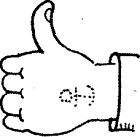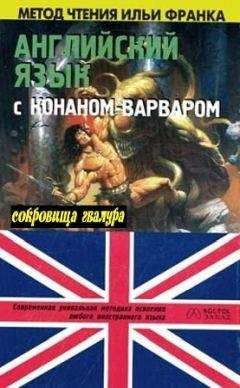Нина Пусенкова - Английский язык. Практический курс для решения бизнес-задач

Все авторские права соблюдены. Напишите нам, если Вы не согласны.
Описание книги "Английский язык. Практический курс для решения бизнес-задач"
Описание и краткое содержание "Английский язык. Практический курс для решения бизнес-задач" читать бесплатно онлайн.
Задача данного издания – познакомить учащихся с современной финансово-экономической терминологией. Первая часть книги в большей мере посвящена вопросам управления, вторая – финансовой проблематике. Темы занятий в основном соответствуют тематике курсов, которые преподаются в большинстве школ бизнеса. Уроки содержат тексты из самых разнообразных профессиональных источников и упражнения, позволяющие студентам закрепить пройденный материал. В конце учебника приводится словарь необходимой лексики примерно из 1000 слов и выражений.
Для студентов бизнес-школ, языковых, финансовых и экономических вузов, а также для всех, кто хотел бы усовершенствовать свой деловой и финансовый английский.
Terms:
rewards, salary, driver, value, adhere, job satisfaction, assumption, extrinsic, needs workforce, environment, command-and-control, delivers, decision-making, fringe benefits, remuneration, gain, hygiene, challenging, levers, performance, delegation of authority
Exercise 6. Translate into English.
Теория Z Уильяма Учи
Уильям Учи, профессор Калифорнийского университета, разработал в 1981 году теорию Z, которая сочетает в себе черты американского и японского управленческого стиля. В организации типа Z работники участвуют в процессе принятия решений и способны выполнять множество самых разнообразных производственных заданий. Такой подход, сходный с культурой японских компаний, служит важной движущей силой повышения производительности труда при одновременном уменьшении прогулов и текучести кадров. Теория Z подчеркивает значимость таких аспектов, как ротация работ, расширение навыков сотрудников, преимущество специалистов широкого профиля по сравнению с узкой специализацией, а также потребность в постоянном развитии и подготовке кадров.
По мнению Уильяма Учи, работники хотят построить дружеские взаимоотношения на основе сотрудничества с коллегами и работодателями. В рамках его теории работники нуждаются в поддержке со стороны компании и высоко ценят рабочую среду, в которой семья, культура, традиции и социальные институты имеют не менее важное значение, чем сама работа. У таких сотрудников очень высоко развито чувство порядка, дисциплины и моральное обязательство усердно трудиться. Наконец, в рамках теории Z предполагается, что работники будут трудиться с максимальной отдачей, если менеджмент будет их поддерживать и заботиться об их благосостоянии.
Важной предпосылкой данной теории является то, что менеджмент должен быть уверен в своих сотрудниках. Теория Z предполагает, что необходимо развивать такую рабочую силу, которая сохраняла бы преданность своей компании и предпочитала бы работать в ней всю жизнь. В таком случае, когда сотрудник дорастет до уровня старшего менеджмента, он будет досконально знать компанию и ее деятельность и сможет эффективно применять теорию Z к новым сотрудникам.
Lesson 2
Corporate Culture
Read and translate the text and learn terms from the Essential Vocabulary.
How to Achieve Excellence by Managing the Culture in your Company
In recent years, corporate culture has been a topic widely discussed by managemement gurus offering their services to organizations desperate to improve their performance. Serious managers, naturally, question whether the focus on corporate culture is merely a passing fad, or if it indeed has a long-term beneficial effect on the way organizations are managed. Those who look for a quick fix for making organizations effective may be disappointed. We know that societal culture develops slowly and endures for a long time. Similarly, organizational culture needs to be nurtured and managed. Culture must be concerned with all aspects of management. In addition, an organization culture must also guide the relationships with certain stakeholders outside the enterprise, especially customers, but also suppliers, creditors, and even competitors who deserve an operating culture of fair play in the competitive market place.
Most managers today would probably agree that the effectiveness and efficiency of an organization are influenced by its culture. This means, in turn, that key managerial functions will be carried out differently in organizations with different cultures.
Although some management advocates would have us believe that the concepts of corporate culture represent the latest thinking in management theory, they are not. In 431 B.C., Pericles urged the Athenians, who were at war with the Spartans, to adhere to values underlying the culture – democracy, informality in communication, the importance of individual dignity, and promotion based on performance. Pericles realized that these values might mean victory or defeat. You will probably note that these values are not so different from those espoused by many U.S. companies.
As it relates to organizations, culture is the general pattern of behavior, shared beliefs and values that members have in common. Culture can be inferred from what people say, do, think, and how they behave within an organizational setting. It involves the learning and transmitting of knowledge, beliefs, and patterns of behavior over time. This also means that an organization culture is fairly stable and does not change quickly. It often sets the tone for the company and establishes implied rules for how people should behave.
Many of us have heard slogans that give us a general idea what the company stands for. For General Electric, it is «progress is our most important product». AT&T is proud of its «universal service». DuPont makes «better things for better living through chemistry». Delta Airlines describes its internal climate with the slogan «the Delta family feeling». Similarly, Sears wants to be known for its optimum price/quality ratio, Caterpillar for its 24-hour service, Polaroid for its innovation, Maytag for its reliability, and so on. Indeed, the orientation of these companies, often expressed in slogans, contributes to the successful conduct of their business. But slogans must be translated into managerial behavior.
Managers, and especially top executives, create the climate for their business. Their values influence the direction of the company. Values are a fairly permanent belief about what is appropriate and what is not that guides the actions and behavior of employees in fulfilling the organization’s aims. Values form an ideology that permeates everyday decisions and behavior.
In many successful companies, corporate leaders serve as role models, set the standards for performance, motivate employees, make the company special and are a symbol for the external environment. It was Edwin Land, the founder of Polaroid, who created a favorable organizational environment for R&D and innovation. It was Jim Treybig of Tandem in the Silicon Valley who emphasized that every person is a human being and deserves to be treated accordingly. It was William Proctor of Proctor&Gamble who ran the company with the slogan, «Do what is right». It was Theodore Vail of AT&T who addressed the needs of customers by focusing on service.
In a free-market economy businesses cannot exist without the goodwill of their customers. Yet in certain companies customers are seen as merely interrupting work. Clearly, the long-term success of such a company may be in jeopardy. By contrast, in companies with a strong customer-oriented culture, employees in all departments (not only those that are specially set up to handle customer complaints) listen carefully to the needs of the customers. After all, they are the reasons the company exists. In such companies, measurable customer-satisfaction objectives are set and frequently used for evaluating customer reactions. This may be done through formal surveys or, at times, top managers may contact key customers personally. When Ross Perot, the Texas billionaire who sold his computer company to General Motors, was on the GM board, he answered all customer complaints about cars, rather than sending form letters.
Focus on quality is one of the most important aspects of corporate culture. Too often we hear that what really counts is the bottom line. Of course, businesses can only exist in the long run by generating profit. Unfortunately, profit orientation too often means profit in the short run with little consideration for the long-term health of the enterprise. In the past some U.S. automakers neglected quality because it appeared cheaper to pay for warranty claims than to build quality into the products. The loss of future sales was often not recognized as a cost. In contrast, many Japanese car manufacturers have made quality the basis for long-term profit.
People respond to those things for which they get rewarded. Few rewards are usually given for quality. In a typical company, CEOs get rewarded for profit improvement – seldom for superior products and services. But quality pays in the long run as Japanese car, camera and electronics manufacturers have shown. In Japan, responsibility for quality and productivity is placed at the top. This, in turn, creates a culture that says: Our organization is fanatical about both productivity and quality.
Managers in effective organizations are characterized by action. This can only be done by top management’s commitment to breaking down rigid organization structures. It may begin with some symbolic actions such as eliminating reserved parking spaces for top-echelon managers. After all, is it not equally important that the first-line supervisor be on time to start the assembly line rather than circling the parking lot to find a space to park? Companies with a strong people-oriented culture believe that the dignity of all people is paramount. Whether a manager or a worker, all contribute toward a common goal; all have basic needs for being appreciated as persons; all have the desire to feel competent in carrying out their task, whatever it is.
While a clear mission statement and goals have the potential to motivate organizational members to excellence, the means to achieve these ends must never be compromised. Actions and behavior must be guided by adherence to company policy, must never violate any laws, and above all, must not be unethical. In ethical companies, integrity is the norm, not the exception. Ethics may be institutionalized through 1) company policy or a code of ethics, 2) a formally appointed ethics committee, and 3) the teaching of ethics in management development programs.
Thus, the intangible factor of the corporate culture can make a substantial contribution to strengthening the competitive position of a company, and improving the tangible indicator of profit that it is able to generate.
Source: Industrial Management, September-October 1989, pp. 28—32.
Essential Vocabulary
1. сorporate culture – корпоративная культура
2. focus n – фокус, сосредоточие, акцент
focus v – фокусироваться, сосредотачиваться, концентрироваться
3. stakeholder n – заинтересованное лицо
4. customer n – клиент
5. supplier n – поставщик
supply n, часто в plural – предложение; запас, припас; снабжение, поставка
supply v – поставлять, снабжать, доставлять, давать
6. competitor n – конкурент
competition n – конкуренция
competitiveness n – конкурентоспособность
compete v – конкурировать
competitive a – конкурентоспособный
7. fair play – честная игра, игра по правилам
8. effectiveness n – эффективность (общая)
effective a – эффективный
9. efficiency n – эффективность (удельная)
efficient a – эффективный
10. communication n – коммуникации, передача, сообщение, связь
communicate v – сообщать, передавать; общаться; доносить
11. value n – ценность, оценка (компании)
value n – ценить, оценивать
12. slogan n – лозунг, призыв, девиз
13. price/quality ratio – соотношение цена/качество
14. innovation n – инновация, нововведение, новаторство
innovator n – новатор, рационализатор
innovate v – вводить новшества, делать нововведения
innovative a – новаторский
15. contribution (to) n – вклад
contribute (to) v – вносить вклад
16. executive n – руководитель
executive n – исполнительный
17. founder n – основатель
found v – основывать
18. research and development (R&D) – исследования и разработки
19. goodwill n – добрая воля, деловая репутация; «гудвилл» (статья баланса)
Подписывайтесь на наши страницы в социальных сетях.
Будьте в курсе последних книжных новинок, комментируйте, обсуждайте. Мы ждём Вас!
Похожие книги на "Английский язык. Практический курс для решения бизнес-задач"
Книги похожие на "Английский язык. Практический курс для решения бизнес-задач" читать онлайн или скачать бесплатно полные версии.
Мы рекомендуем Вам зарегистрироваться либо войти на сайт под своим именем.
Отзывы о "Нина Пусенкова - Английский язык. Практический курс для решения бизнес-задач"
Отзывы читателей о книге "Английский язык. Практический курс для решения бизнес-задач", комментарии и мнения людей о произведении.






















